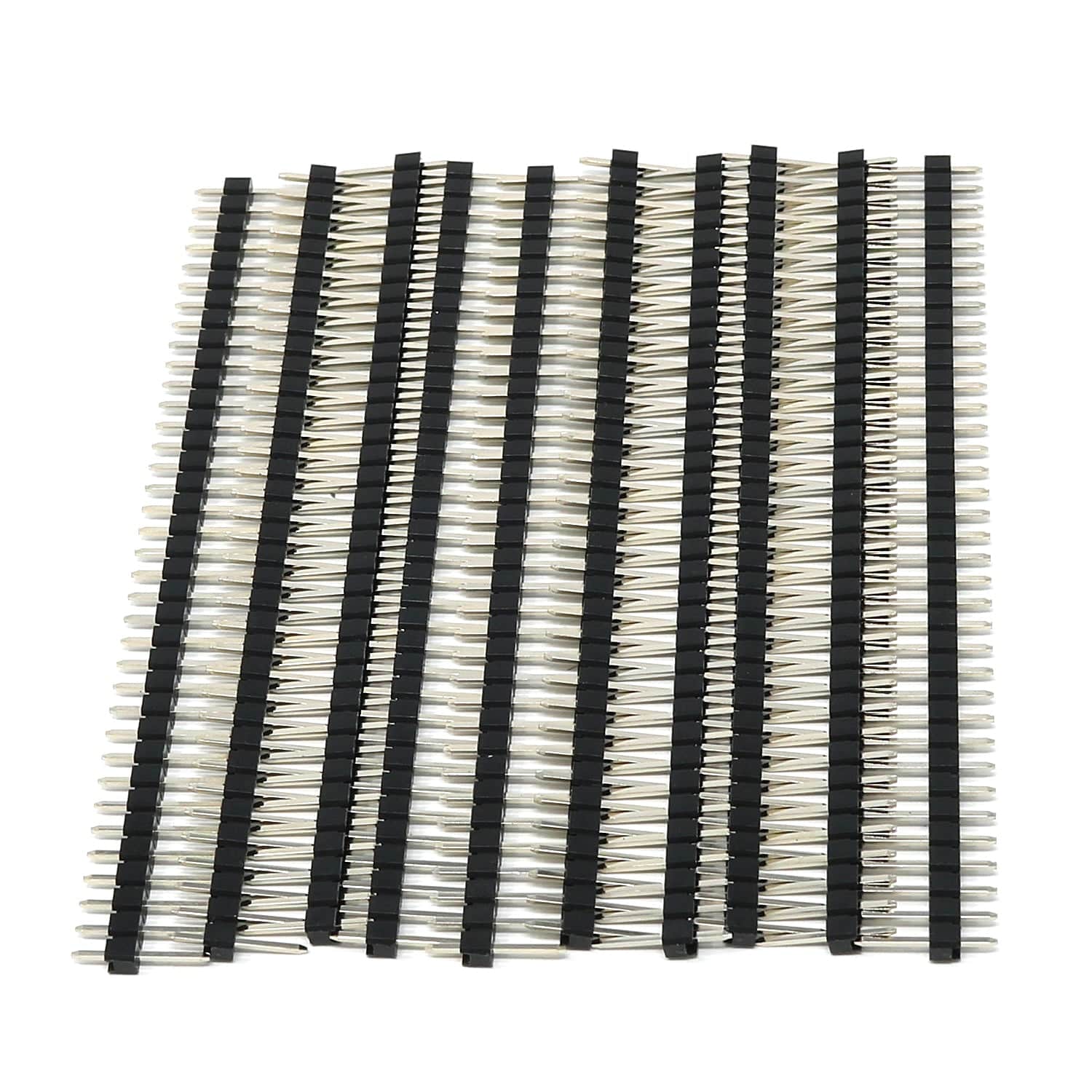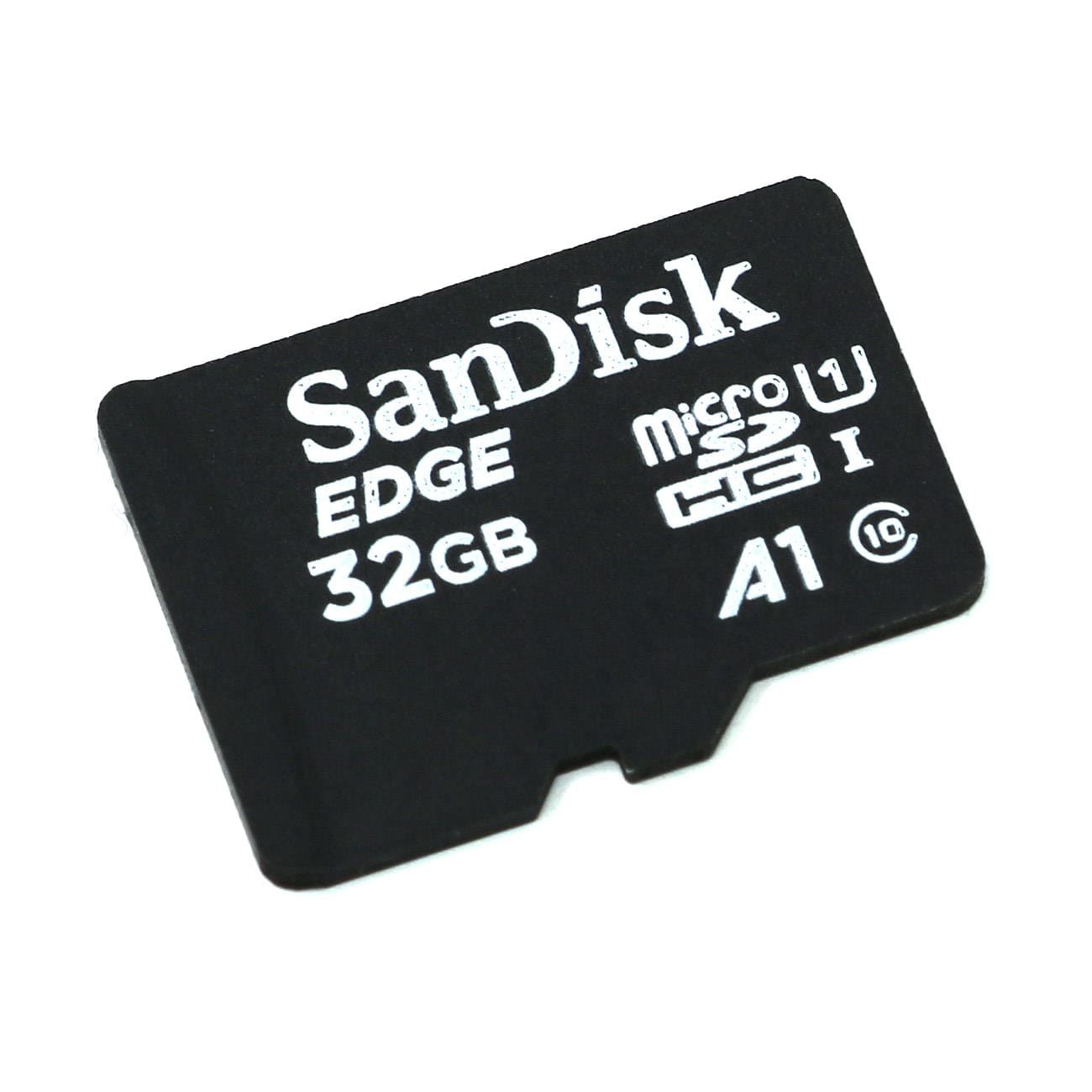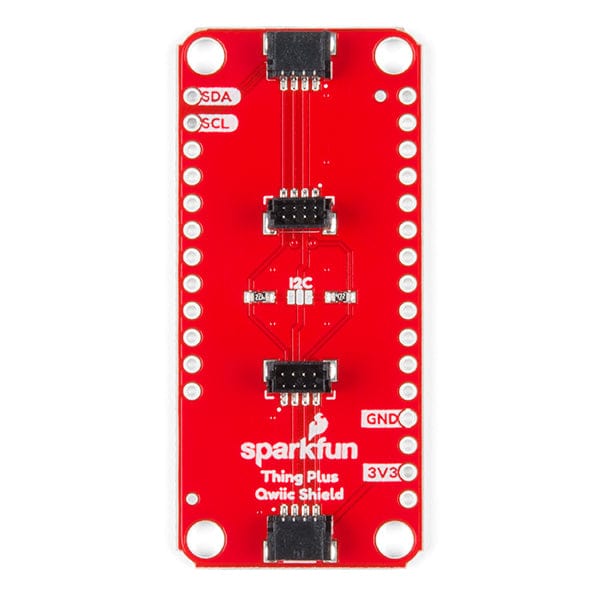
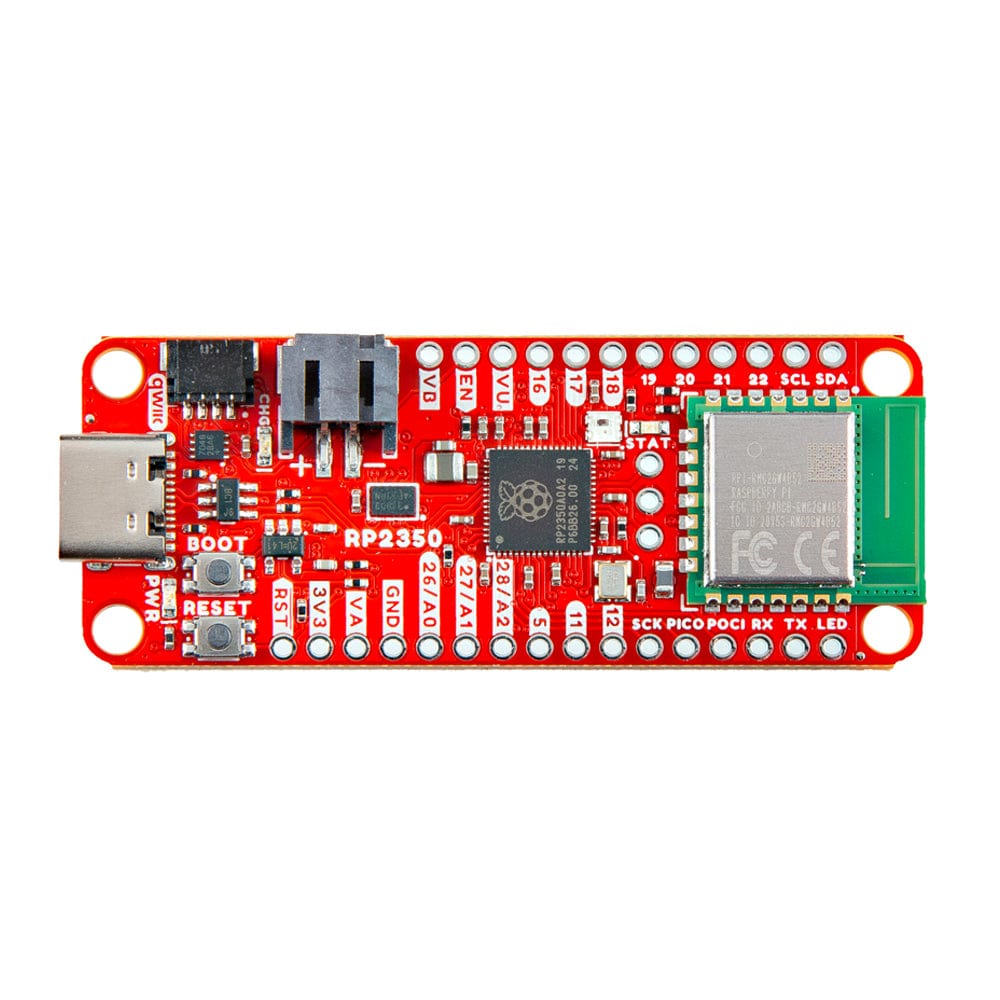



Login / Signup
Cart
Your cart is empty


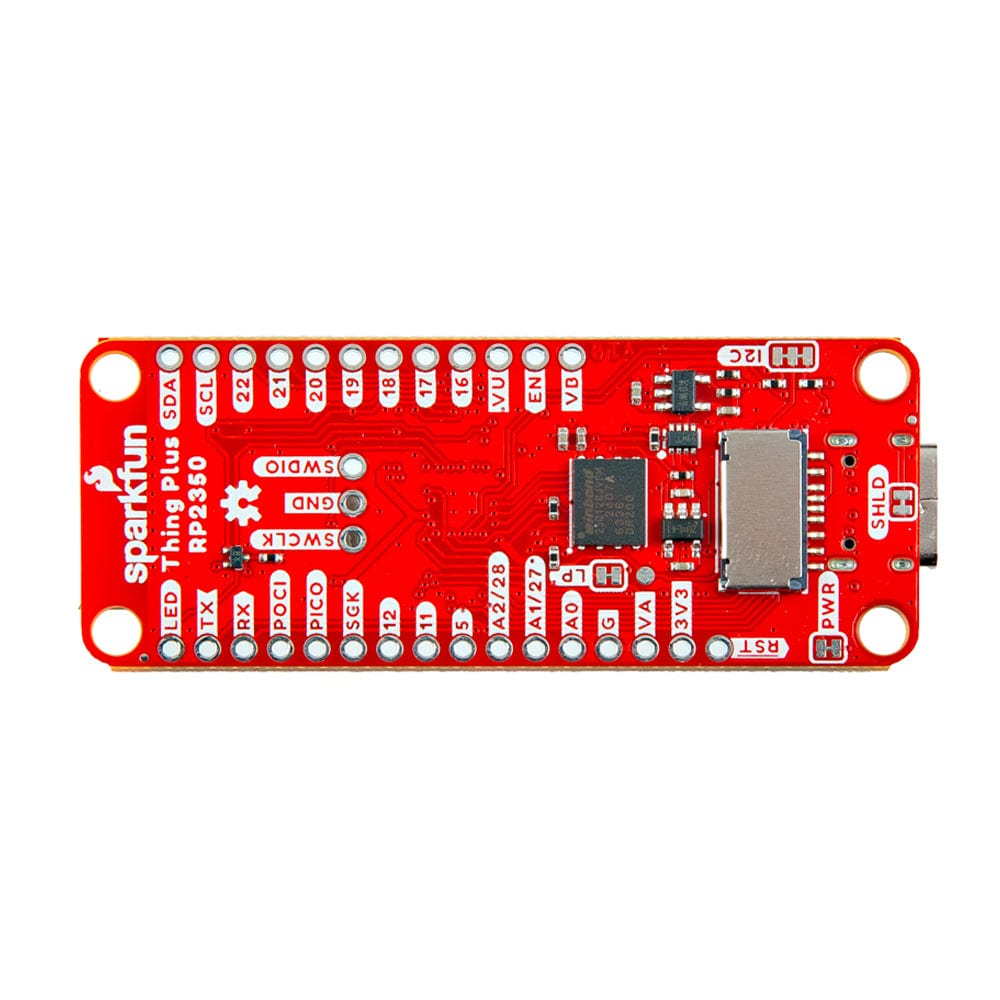


The SparkFun Thing Plus - RP2350 is a dynamic and powerful wireless development platform in the Thing Plus form factor. Built around the RP2350 microcontroller from Raspberry Pi, this board includes their radio module for single-band 2.4 GHz WiFi 4 (802.11n) and Bluetooth® 5.2 along with standard hardware components found on all Thing Plus Boards. This includes on-board Lithium Ion (LiPo) battery charging and fuel gauge circuits, µSD card socket, Qwiic connector, and the Thing Plus pinout, allowing use of the RP2350 Thing Plus in a wide variety of both local and remote applications.
The RP3250 is a unique dual-core microcontroller with two ARM® Cortex® M33 processors and two Hazard3 RISC-V processors, all running at up to 150 MHz! Now, this doesn't mean the RP2350 is a quad-core microcontroller. Instead, users can select which two processors to run on boot. You can run two processors of the same type or one of each. The RP2350 also features 520kB SRAM in ten banks, a host of peripherals including two UARTs, two SPI and two I2C controllers, and a USB 1.1 controller for host and device support.
The Raspberry Pi Radio Module (RM2) operates over an SPI interface, and we've designed this board to use the same pins for the radio module as official Raspberry Pi boards, making it easy to use the radio module without having to adjust anything from those development boards. Along with supporting both WiFi 4 and Bluetooth® 5.2, the RM2 supports both basic (1 Mbps) and enhanced (2 or 3 Mbps) data rates for standard Bluetooth as well as BLE (Low Energy).
The RP2350 Thing Plus includes two expanded memory options: 16MB of external Flash and 8MB PSRAM connected to the RP2350's QSPI controller. This Thing Plus board works with C/C++ using the Pico SDK, MicroPython, CircuitPython, and Arduino development environments.
Temperature Sensor and Cables are NOT included
Warning: LiPo Battery Connector Polarity
The LiPo battery connector on v10 of the Thing Plus - RP2350 is reversed from SparkFun's normal 2-pin JST battery connection. If you are using this board with a LiPo battery, follow the silkscreen markings on the board for correct polarity.
Get Started with the Sparkfun Thing Plus - RP2350 Guide
SparkFun Thing Plus - RP2350 Features
RP2350 General Features






